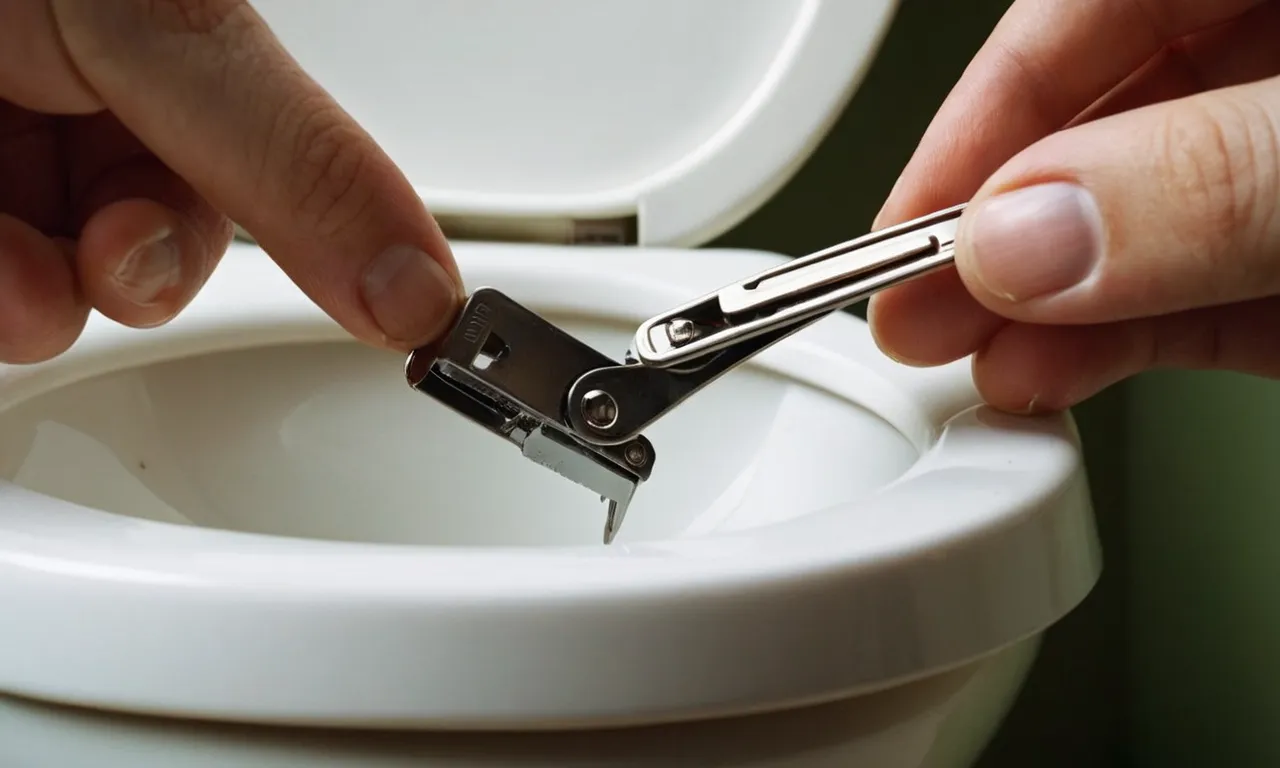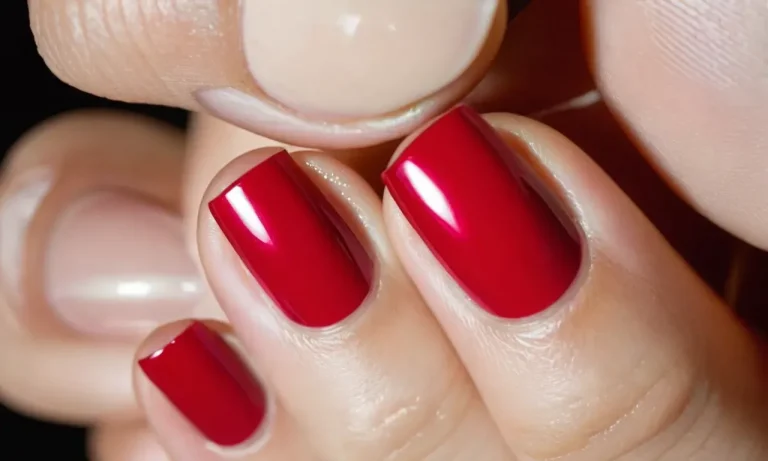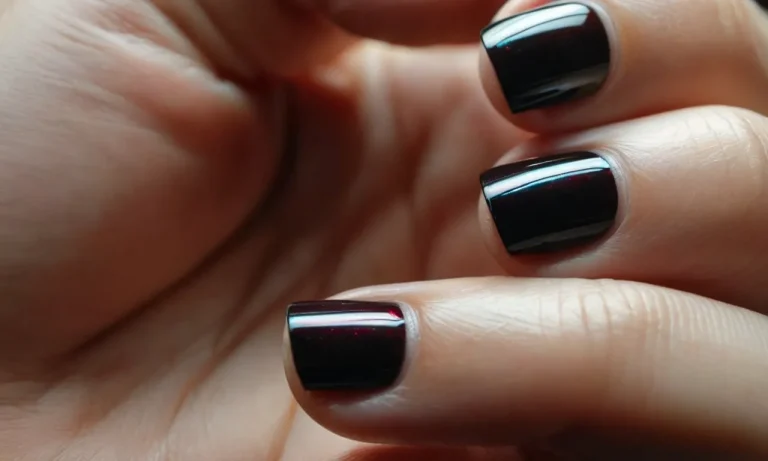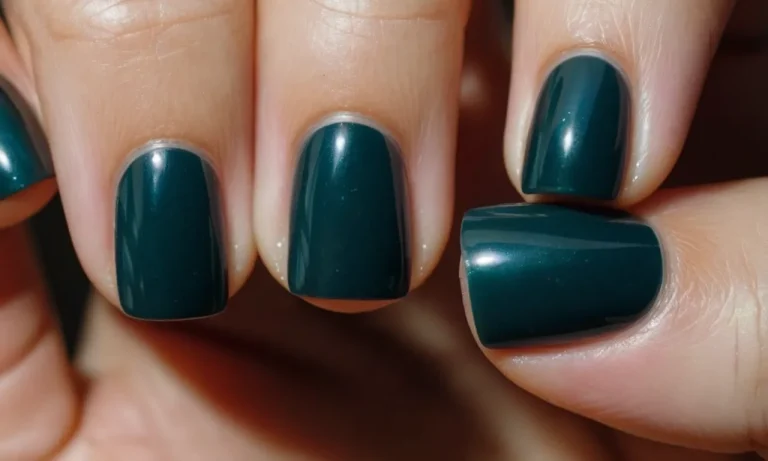Can You Flush Nail Clippings Down The Toilet?
If you just clipped your nails and are wondering if you can simply flush the clippings down the toilet, you’re not alone. Many people ponder this question and have concerns about whether this common practice is actually okay.
If you’re short on time, the quick answer is: you generally should not flush nail clippings down the toilet. Though small, they can accumulate in pipes over time and cause clogs.
Why You Should Not Flush Nail Clippings
They Can Catch in Pipes and Cause Clogs
Flushing nail clippings down the toilet may seem convenient, but they can get trapped in internal pipes and accumulate over time. As more clippings and debris build up, they restrict water flow, leading to clogging (1).
Clogged drains often require a professional plumber to snake the pipes and remove blockages, costing hundreds of dollars. In severe cases, pipes may even need replacement.
They Don’t Break Down Easily
Human nails are made of a tough protein called keratin which is resistant to decomposition. When flushed, nail clippings can remain intact for long periods as they travel through drainage pipes. Eventual break down requires specific conditions not met inside plumbing.
The sturdy nature of nails means they persist and pile up inside pipes.
Problems Are Cumulative
Each nail clipping may seem tiny and harmless. But flushing them routinely causes a cumulative effect. As home occupants clip their nails over months and years, the quantity of nail bits reaching pipes adds up. Flushing just one per day can mean over 300 clippings per year entering drains.
So while each clipping poses little risk, the combined volume over time can create substantial drain blockages.
Alternative Disposal Methods Are Better
Instead of flushing nail clippings down the drain and ultimately clogging pipes, disposal into the trash is a safer option. Simply place clippings in a small bag or envelope before throwing them in the garbage. This containment prevents any risk of nails falling out later.
For easy cleanup, clipping nails over a surface like paper towels or newspaper allows easy sweep up. Proper disposal into the trash ensures nail bits reach landfills rather than plumbing pipes.
In What Situations Might It Be Okay?
Very Occasional Clippings
Flushing the odd fingernail or toenail clipping down the toilet likely won’t cause any issues, as long as it’s not done frequently. The wastewater system is designed to handle small foreign objects. However, it’s still best practice to dispose of nail clippings in the trash whenever possible.
Using a Powerful Garbage Disposal
If you have a heavy-duty garbage disposal, you may be able to grind up the occasional nail clipping without problems. However, it’s not recommended to purposely put fingernails down the drain. Over time, small clippings could accumulate and lead to clogged pipes or damage.
Clippings from Fingernails Only
Due to their small size, clippings from fingernails are less likely to cause issues than toenail clippings. Still, all nail clippings can accumulate over time. For best results, place clippings in the trash instead of flushing, even if they are small.
Best Practices for Nail Trimming and Disposal
Trim Over a Trash Can
One of the top recommendations from nail care experts is to always trim your nails over a small trash can or garbage bag. This helps easily capture the nail clippings so they don’t go flying all over the place. It also makes cleanup fast and simple.
An old tissues box or empty container with a lid can also get the job done nicely.
Wrap Clippings in Tissue or Paper
If you don’t have a small trash bin handy while trimming your nails, be sure to have some tissues or scrap paper ready. As soon as clipping occurs, quickly wrap the nail bits in the paper before they go astray. This helps keep the area tidy and makes disposal easier.
Empty Clippings in Outside Trash
It’s recommended to empty any nail trimmings collected indoors into your outdoor garbage as soon as possible after finishing nail care. Some sources like Family Handyman strongly advise against putting clippings down any drains.
Place the wrapped bits into a bag and toss in your main garbage right away.
Use an Emery Board for Smoothing
Rather than trimming nails down to the quick, a smarter approach is to use an emery board or nail file for final shaping and smoothing. Gently filing in one direction can neatly trim off any ragged edges without sending nail bits flying.
It also helps avoid the risk of cutting the tender skin around the nails. This reduces pain and the chance of infection.
Conclusion
While it may seem harmless to flush the occasional nail clipping, this debris can gradually accumulate inside pipes and cause problems. Following best practices like containing clippings and throwing them in the trash is the safest approach.
With some minor adjustments to your nail care routine, you can help avoid plumbing issues down the road. Protect your pipes by keeping clippers away from the toilet and toilets clear for their intended purpose.







